A calendar is the launchpad for your team. It holds everything you need to take a pulse on progress and make needed changes. If you’re not using Google Calendar to keep up with meetings, out-of-office (OOO) events, and even team members’ capacity, it’s easy to set up and share.
In this guide, you’ll learn how to create a shared calendar in Google Calendar. Plus, stick around for bonus tips to help you get the most out of Google Calendar!
How to create a shared Google Calendar
Let’s start by creating a new calendar in Google Calendar. Then, we’ll get into how to add people to it.
How to create a new calendar
1. Open Google Calendar on your desktop. Currently, you can’t create new calendars from the Google Calendar app.
2. Click the + symbol next to Other calendars.
3. Select Create new calendar.

4. Name the calendar and add an optional description (e.g., “Work Calendar”).
Note: You can also create a Family Calendar for personal to-dos, events, and commitments and share it with your spouse, kids, parents, etc. Follow the same steps above and name it “Family Calendar,” or create a family group (with up to six members total), automatically creating a shared calendar for your family’s use.
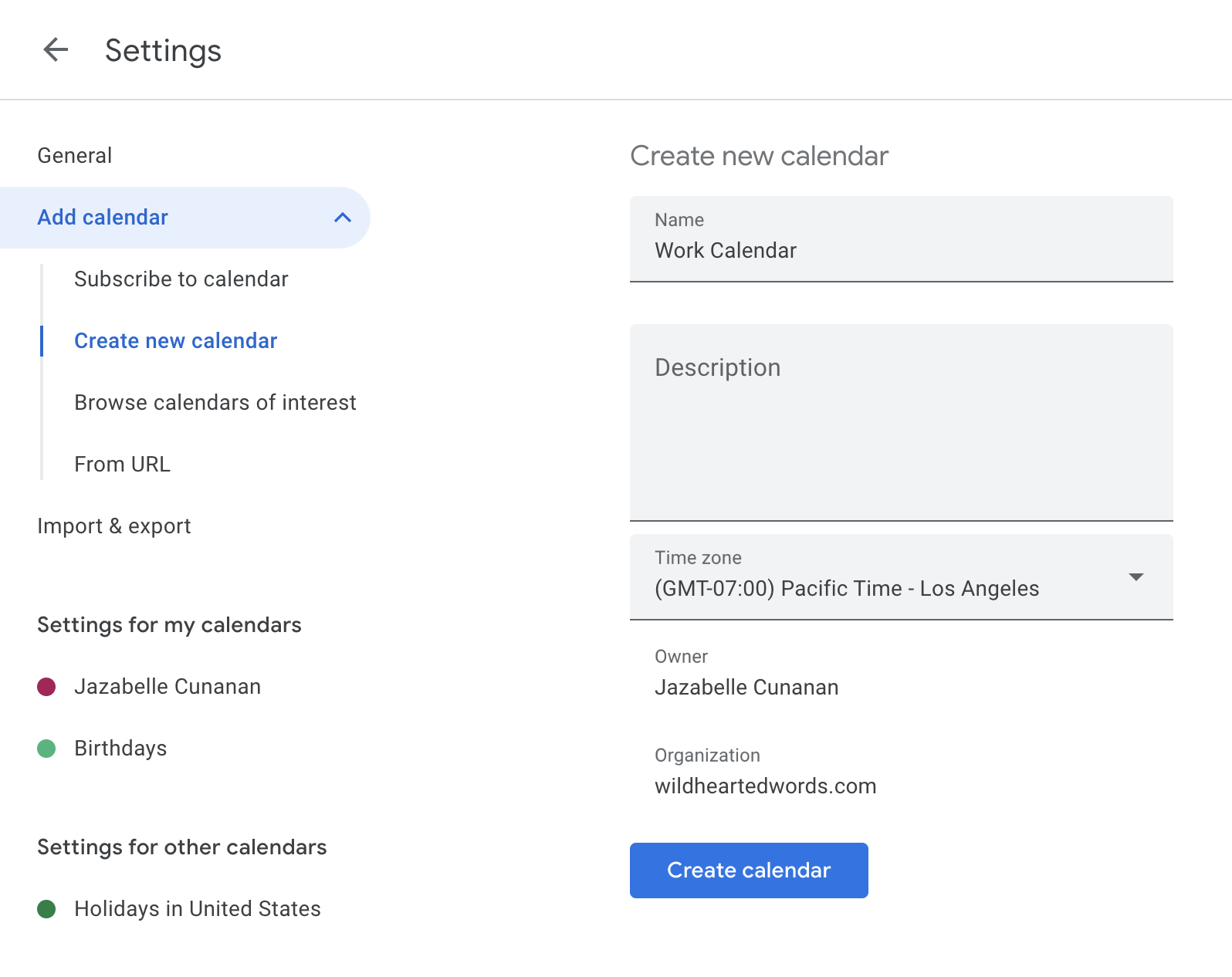
5. Click Create calendar.
How to add someone to a shared Google Calendar
In this section, we’ll discuss how to add specific people (e.g., co-workers, stakeholders, and family members) to your calendar. If you’d like to share your calendar with your entire organization, skip to the next section.
1. Open Google Calendar on your desktop. Currently, you can’t share calendars from the Google Calendar app.
2. Under the My calendars list on the left side of your screen, locate the calendar you’d like to share.
3. Hover over the calendar. Then click the three dots to open more options.

4. Select Settings and sharing.
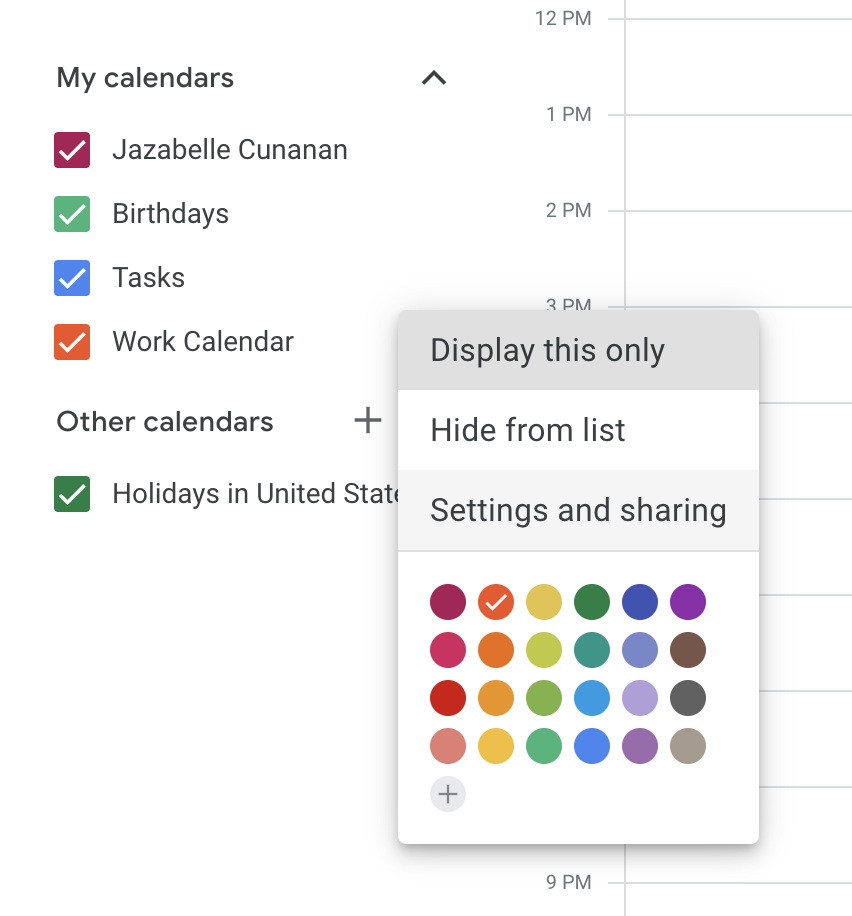
5. Scroll down until you see Share with specific people. Click Add people and groups.
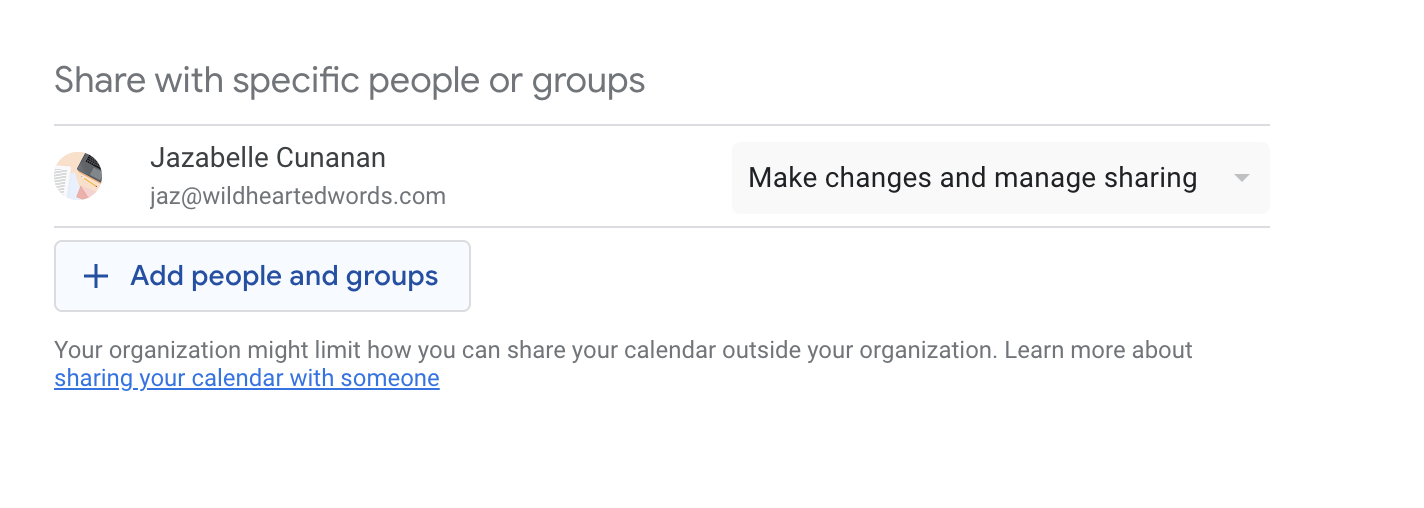
6. Enter the email addresses or names of the people you’d like to share your calendar with.
7. Select the appropriate permissions for each person. Permission settings determine what people can view and if they can personally manage sharing and make changes to calendar events.
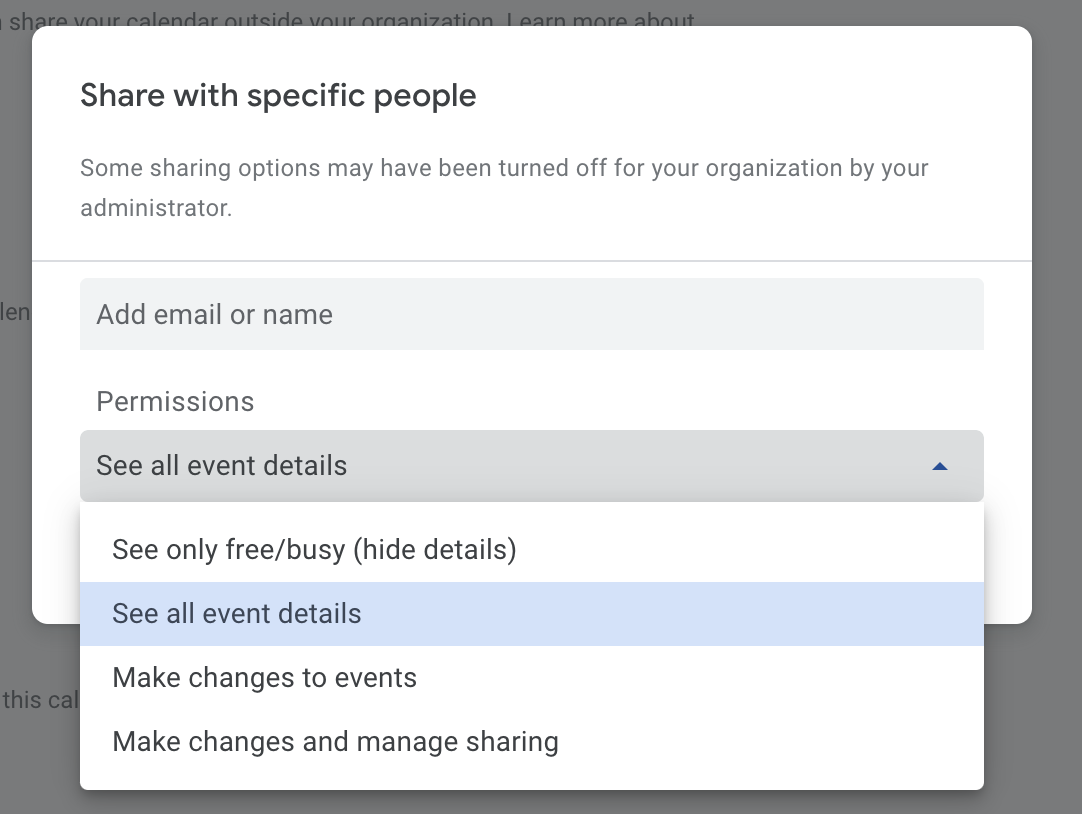
8. Click Send.
9. Update at any time by going back to your calendar settings.
Making Google Calendar part of your team’s routine builds a foundation for collaboration and efficiency. Over time, norms and routines may take a dive.
As the team grows, ‘no meeting Wednesdays’ suddenly becomes ‘just this once’ because a new member forgets the policy. You may also want better insight into your team’s bandwidth and project status.
Tools like Clockwise can take your efforts and multiply the reward. Clockwise specifically builds in Focus Time, keeps the no-meeting day intact, and shows where the team spends their time.
How to share your Google Calendar with your organization
Wondering how to make a calendar accessible to anyone in your organization? We’ll show you how.
1. Open Google Calendar on your desktop. Currently, you can’t share calendars from the Google Calendar app.
2. Locate the calendar you'd like to share under the My calendars list on the left side of your screen.
3. Hover over the calendar. Then click the three dots to open more options.

4. Select Settings and sharing.

5. Scroll down until you see Access permissions for events. Click the checkmark next to Make available to [your organization].
6. Select the appropriate sharing settings in the drop-down menu.
How to make your Google Calendar public
Going public with your Google Calendar is an easy way to share your availability with people outside your organization in Google Workspace, including people without a Google account.
You might consider this option if you’re a service provider.
Share the link to the public version of your calendar in an easy-to-find place, like your email signature, Slack profile, or other communication app profile.

1. Open Google Calendar on your desktop.
2. Under the My calendars list on the left side of your screen, locate the calendar you’d like to make public.
3. Hover over the calendar. Then click the three dots to open more options.
4. Select Settings and sharing.
5. Scroll down until you see Access permissions for events. Click the checkmark next to Make available to public.
6. Click OK to make your calendar public.
7. Optional: Hide details, like meeting times, project names, and more, by clicking the permissions dropdown menu and selecting See only free/busy (hide details).
How to create an appointment schedule
If you don’t want to share your calendar publicly but you still need to share your availability for appointments with external stakeholders, try creating an appointment schedule.
1. Open Google Calendar on your web browser.
2. In the top left, click the Create button and select Appointment schedule.
3. Customize the details of your appointment schedule, including:
- The title
- Appointment duration
- Availability (and adjusted availability for additional customization)
- Scheduling window
- Booked appointment settings, such as buffer time between appointments
- Calendars
- Co-hosts
Depending on your Google Workspace plan, you can customize multiple booking pages with additional premium features.
4. Save the page, and you’re all set!
5 tips to get the most out of your group calendar
How to color code your team's Google Calendar
Color coding your team's calendar stamps out inefficiency by making it easy to comprehend its contents at a glance.
You can assign a color to an entire calendar (to differentiate it from other calendars in your Google account). Or you can assign colors to specific types of calendar events (e.g., OOO, 1:1s, stand-ups, etc.).
How to assign colors in the web version of Google Calendar:
1. Open Google Calendar.
2. Under the My calendars list, hover over the calendar you’d like to color code.
3. Click the three dots.
4. Select a color in the palette or click the + symbol for more color options.
5. This will color code the calendar itself. To color code an individual event, right-click the event and select a new color.

How to assign colors in the Google Calendar app for Android and iOS (iPad and iPhone):
1. Open the Google Calendar app on your Android or Apple mobile device.
2. Click the three horizontal lines in the top-left corner to open the main menu.
3. Scroll down and select Settings.
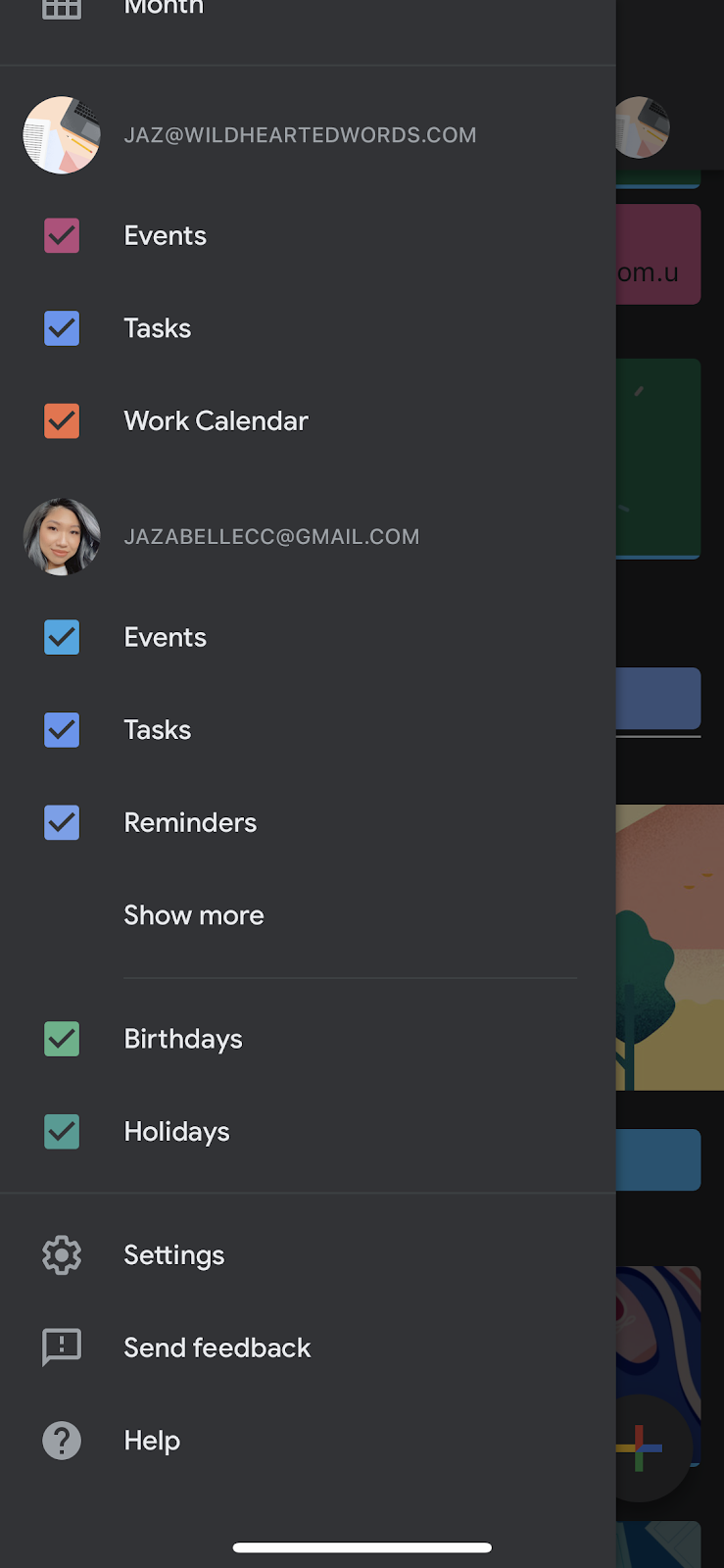
4. Select a calendar you’d like to assign a color to.
5. Tap the current color label to open more color settings.

6. Select a new color label.
7. This will color code the calendar itself. To color code an individual event, tap on the event and then tap the edit icon. From there, you can assign a color to the event.
In Clockwise, color coding provides a similar visual cue, and it’s all automatic! It uses machine learning to code events based on what it learns about your meetings. When it categorizes a new meeting added to the calendar, it automatically assigns a color based on its type — one-on-one, external meeting, Focus Time, and more.
How to time block on Google Calendar
Time blocking puts each part of your day to work for you. It helps you decide when to work on a specific goal. It also enables you to build in breaks and the not-quite downtime that fills your day — like cleaning up your inbox or planning your week. Time blocking also forces you to put everything — tasks, notes, and responsibilities — in one place so you don’t miss anything.
1. Open up your Google Calendar.
2. Click the day and time for the first block to prompt a new event. Instead of clicking Save, click More options.
3. Set the time and add any important details—project name, project color code, list of tasks to accomplish in the time block, etc.
4. The last step is to mark yourself as Free or Busy during the block. You might mark yourself as busy during lunch but free during a time block you reserve for invitations to meetings, appointments, or other engagements.
When your Google Calendar is connected with Clockwise, you can use the Asana integration. Pull tasks from Asana and drop them into your busy time blocks to accomplish the most during undisturbed work time.
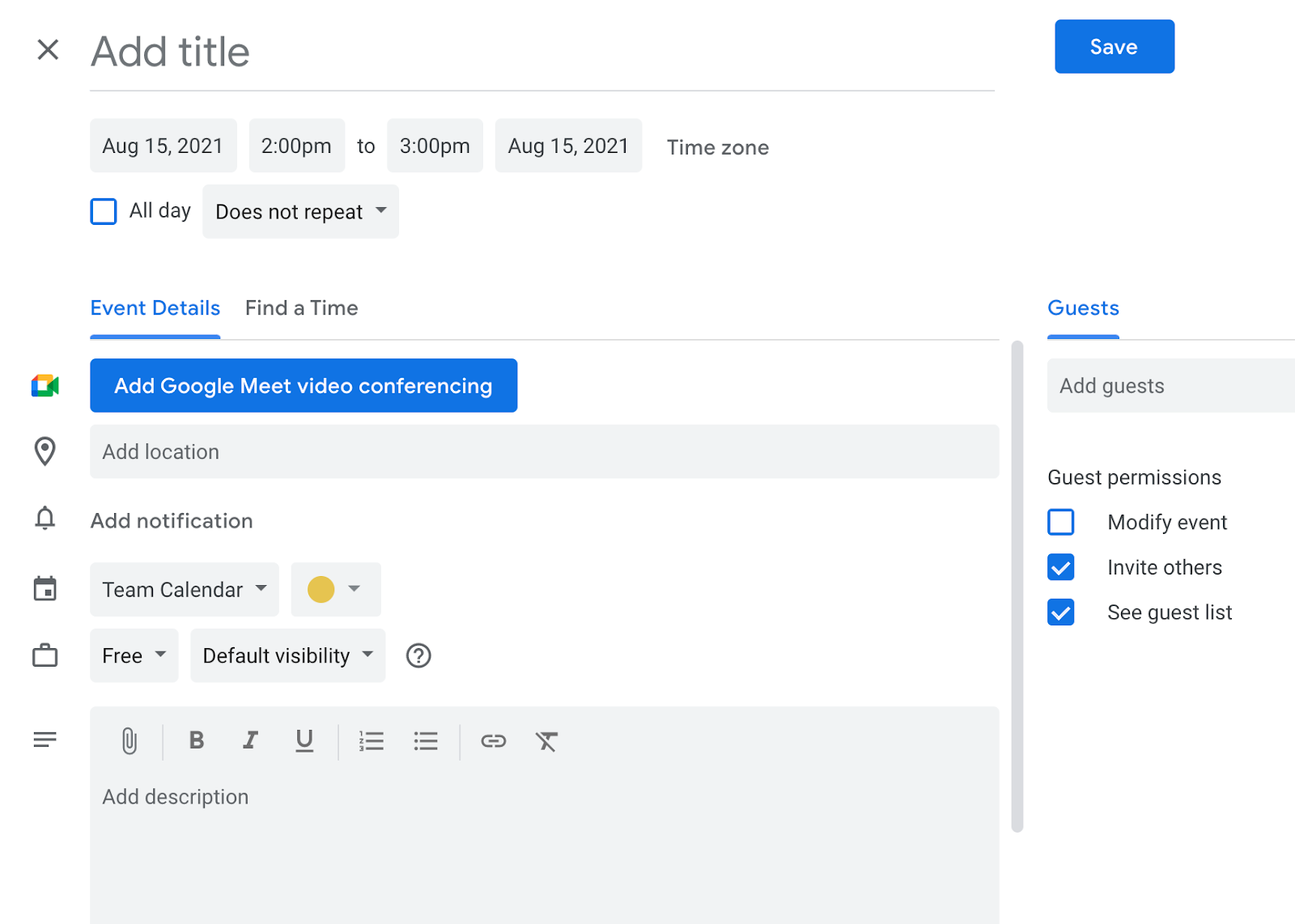
How to add an event to a shared Google Calendar
Take charge of putting team meetings on everyone’s mind by adding events to the shared calendar yourself. Check with the calendar creator to confirm your permissions, and create away. Your events display your and the calendar’s name.
1. Open Google Calendar, and click Create + in the top-left.
2. Select Event.
3. Plug in the event name and details.
4. Near the bottom, select the calendar you want the event to go to.
5. Click Save.
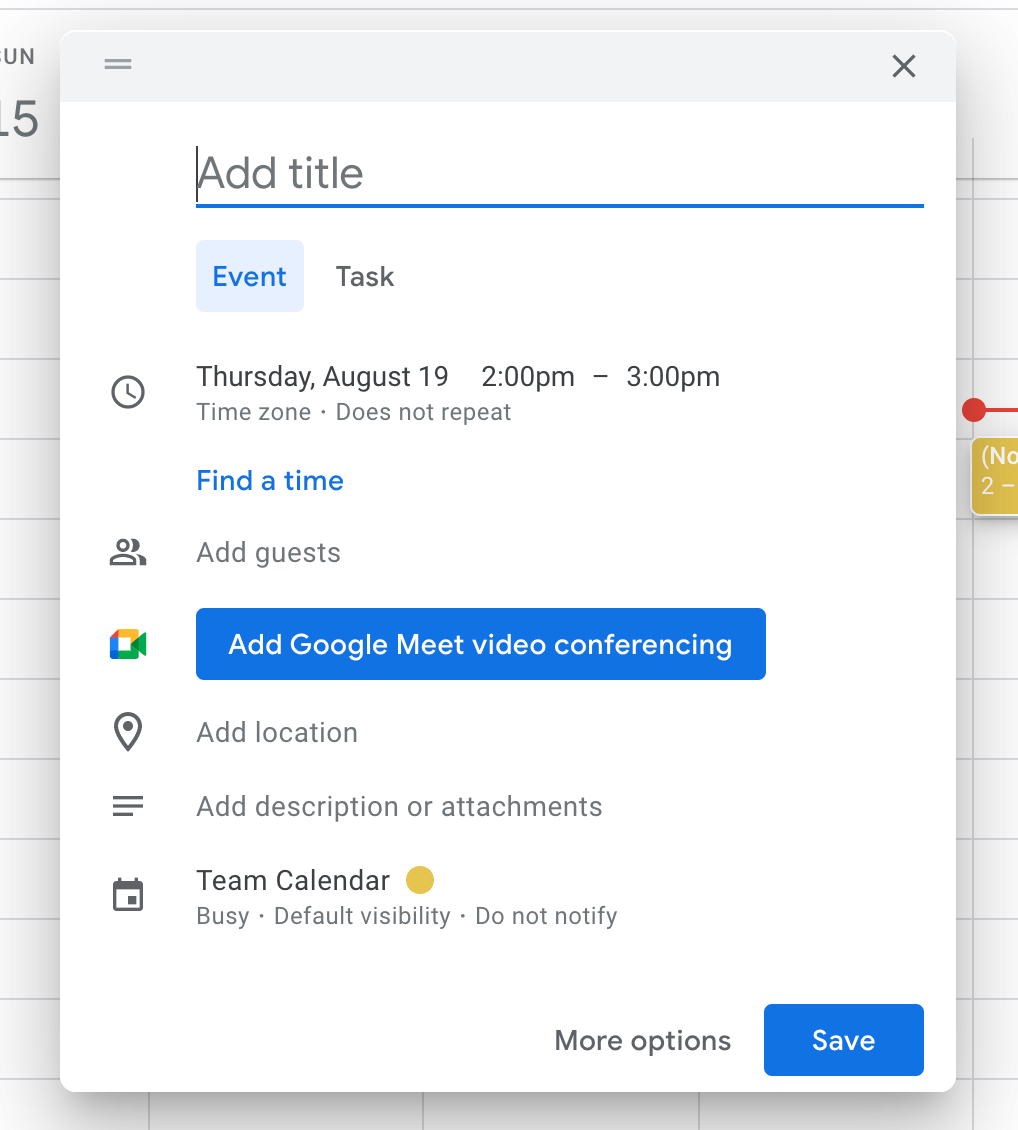
How to receive your daily agenda in Gmail
Get ahead of the day by setting a daily agenda to be delivered to your Gmail inbox.
1. Open Google Calendar on your web browser.
2. Click the gear icon > Settings.
3. On the left navigation menu, find Settings for my calendars. Click the calendar for which you want to receive an agenda.
4. Scroll to Other notifications and click on the dropdown menu next to Daily agenda to select Email. You can make changes to your notification preferences at any time.
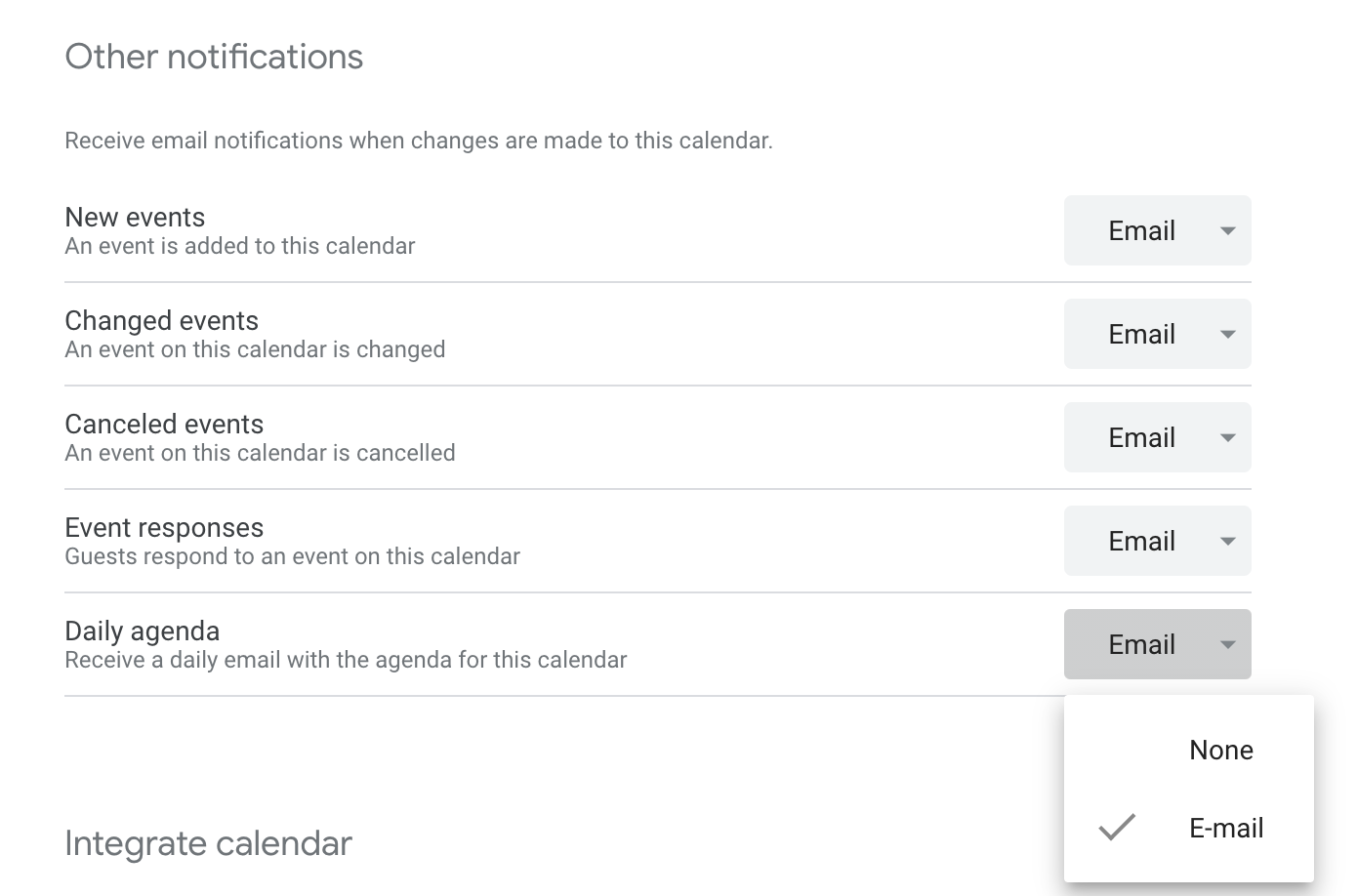
Pro tip: Want to receive your daily agenda in Slack instead of email? Download Clockwise for free today to deliver a daily forecast straight to your favorite instant messaging platform.
How to schedule multiple time zones in Google Calendar
Save yourself the mental math of coordinating meetings impacted by multiple time zones. Adjust calendar settings so every team member’s time zone is represented.
1. Start by clicking on the gear icon (settings) near the top of your calendar.
2. On the left, under General, select World clock.
3. Check the box to Show world clock and begin adding time zones based on the locations of your team members and other stakeholders.

Now, you see each time zone whenever you open your calendar.

Going forward
It’s easy to overlook a tool as simple as a calendar. However, it offers the opportunity to build a better day. Each of these Google Calendar tips impacts productivity in its own way. It’s up to you to determine where you and your team need the most help: scheduling meetings, sharing availability with outside stakeholders, or simply keeping up with time zones to respect everyone’s time.
Squeeze the most out of Google Calendar with Clockwise, an AI-powered calendar assistant. Clockwise is packed with team time management features like: automatic between personal and team calendars, automatic color coding, and AI-powered scheduling across time zones. Try Clockwise for free today!


.gif)



